
IEE Testing
Fixed wiring installation testing (IEE) involves the testing of electrical services and systems that conduct electricity around a building.
If you’re fed up of opening the fire door every time you want to pass down the corridor, then our range of automatic fire door closers are the perfect solution for you!
The practice of wedging fire doors open is possibly the most common and serious breach of fire safety in premises today.
If fire strikes, fire doors are critical to limiting its spread and every fire door must either be kept shut using an effective closer or fitted with an approved holdback device.
It is essential that all fire doors are fitted with a suitable door closing device that will automatically keep the door shut. However, this isn’t always entirely practical in many applications, from schools to offices, which leads to malpractice such as the doors being held open by a hook, doorstop or even a fire extinguisher.
An open fire door is totally useless in the event of a fire, allowing the rapid spread of smoke and flames. That’s why it’s absolutely essential that if a door needs to be held open, it’s done with an approved hold-back device.
At Blazequel, we’ve helped many of our customers with this problem. We’re approved distributors for handy products such as the FireCo range which allows the cost-effective retro-fit of fire door holders and closers for all applications.
The Supply & Installation of these Fire and Security Doors are bespoke to your requirements. Contact us today for a free quotation!
Get your free copy of your fire door maintenance checklist here.
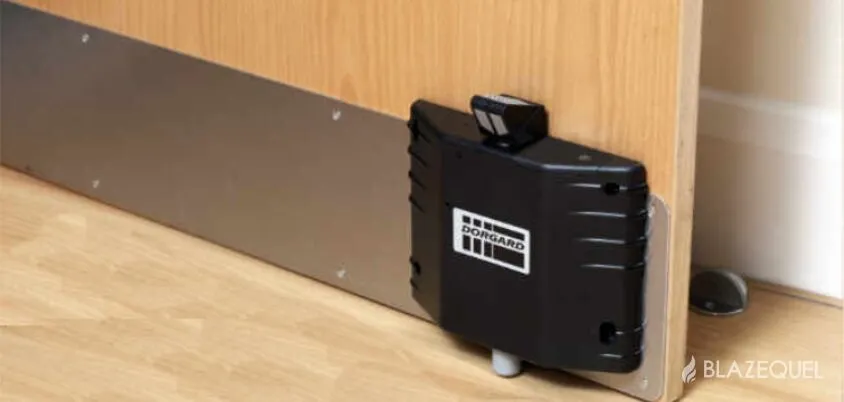
This is a economical and effective method of retaining fire doors, and is activated to release the fire door when it senses the fire alarm sounding. These are quick and easy to install, and being battery operated do not require any untidy or costly external wiring.
However, it must be noted that this does not replace a hydraulic door closer; and is subject to the alarm sounder functioning properly. If this does not happen the door will not close. This limitation also means that the door will not close in the event of a mains power failure. One other drawback with this system is the fact that the batteries have to replaced on a regular basis, incurring further costs and hassle.
The standard Magnetic Door Retainer unit is the traditional approved method of holding open a fire door. The units are wired on a dedicated circuit interfaced electrically with the fire alarm, and release automatically if the power supply is removed (i.e. on activation of the Fire Alarm System). These units normally require a return wall for mounting although depending on the circumstances, a floor mounting version and chain mechanism are also available.
This is an advantageous option for a fully compliant system – particularly if the hydraulic door closer’s are already in place – which will release automatically in the event of a power failure, and in this sense is a step above acoustically actuated units. However, it only holds the door in a fully open position, and does not remove the action of a hydraulic door closer, which would have to be installed separately.
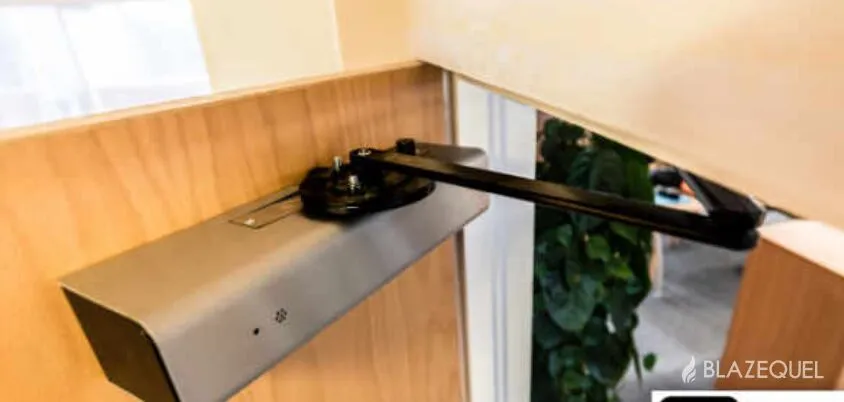
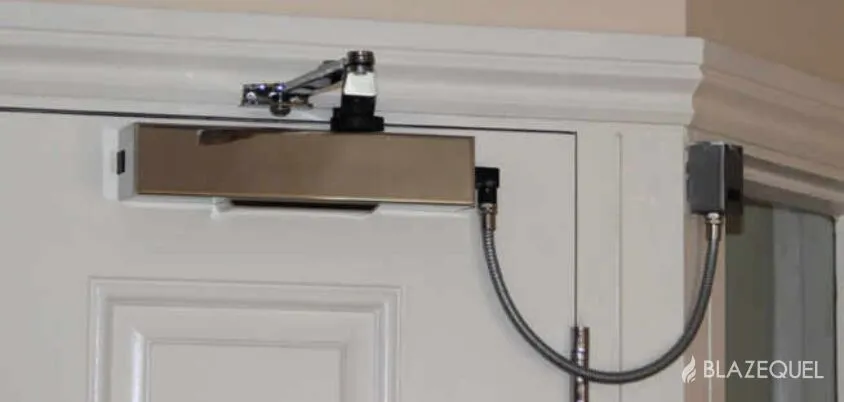
The standard Magnetic Door Retainer unit is the traditional approved method of holding open a fire door. The units are wired on a dedicated circuit interfaced electrically with the fire alarm, and release automatically if the power supply is removed (i.e. on activation of the Fire Alarm System). These units normally require a return wall for mounting although depending on the circumstances, a floor mounting version and chain mechanism are also available.
In the normal / standby mode, the hydraulic closer function is disabled. In the event of activation of the fire alarm system, the hydraulic closer function is enabled again, shutting the door and containing the fire.
Page 126 states as follows: “In all cases the automatic device should release the fire-resisting door allowing it to close effectively within its frame when any of the following conditions occur:
Office of the Deputy Prime Minister – The Building Regulations 2000 – Approved Document M Page 34 states as follows:
Internal doors will satisfy Requirement M1 or M2 if:
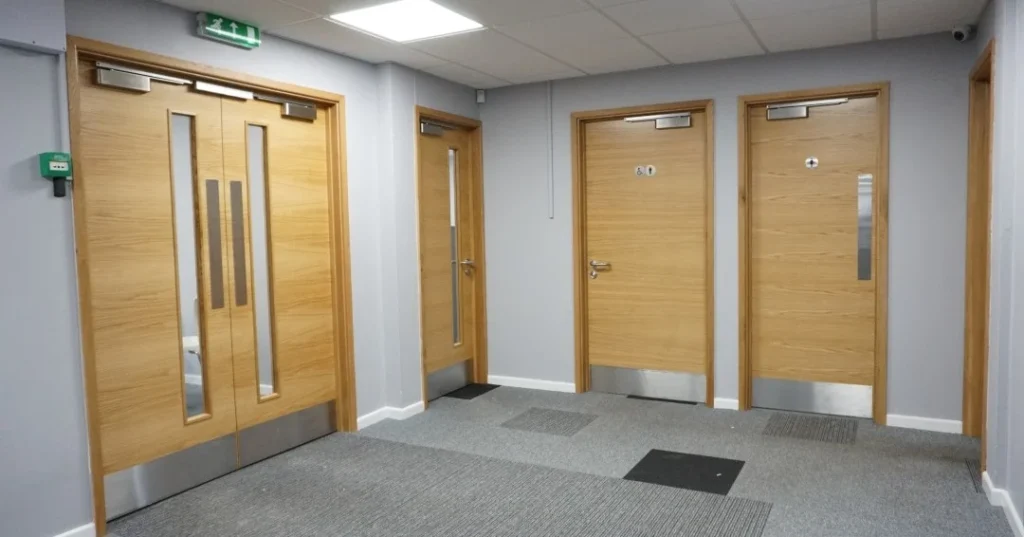
Don’t hesitate to reach out to us, or you can easily fill out the form below. We’re here to assist you.


Fixed wiring installation testing (IEE) involves the testing of electrical services and systems that conduct electricity around a building.
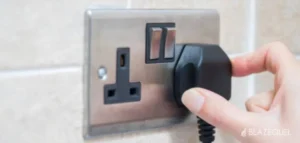
PAT Testing is an essential part of keeping your company safe from the risk of an electrical appliance fire. Contact
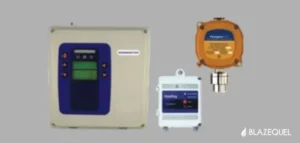
This system is designed to detect toxic and flammable gases, gas detection systems help protect personnel from poisoning or asphyxiation
